Dave and Cindy Gilbert were on a collision course with a lifestyle they didn’t want. Here’s how they escaped the rat race to live full-time, footloose and fancy free, in a Northern Lite truck camper.
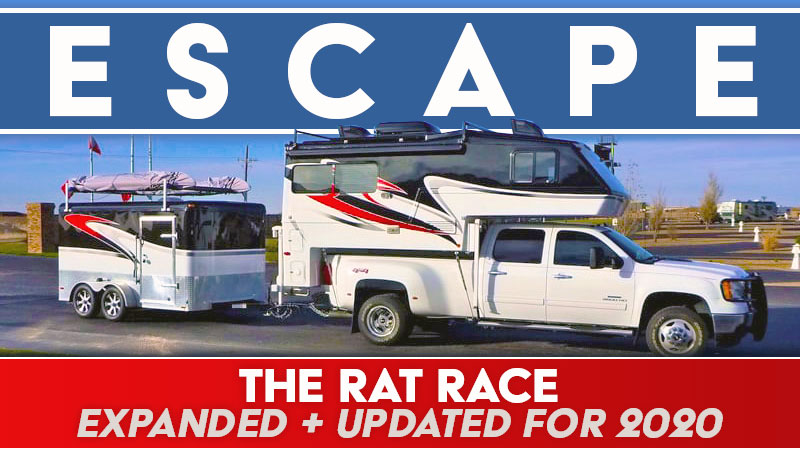
“You’re thirty-nine years old, Dave. If you subtract the last fifteen years of your life, when you won’t be spry enough to do much other than take a walk to the drug store, that leaves you about twenty years of quality life left in your proverbial tank. How are you going to spend them?”
That was the question in my mind years ago, after watching a DVD on full-timing in an RV. In our first life there were the two of us, a cat, a house, (and all that that entails) cars, kayaks, a forty hour work week, and a tent with sixty pounds of camping gear in the trunk of a 1994 Saturn. Life was good.
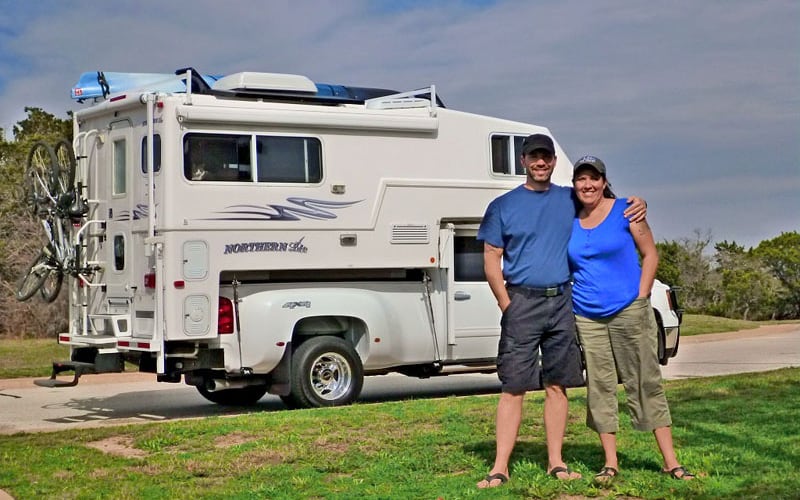
It was so good that we never gave any thought to making any changes to it. We had done all the things a person is taught to do in life; get married, build credit, work hard, buy a home, and buy more things to fill up that home and the garage attached to it.
Our jobs were okay at the time. We had steady schedules and were able to plan for weekend getaways. There was balance and we felt fortunate. Many people didn’t have that luxury. We enjoyed the outdoors so much we eventually ditched the tent for a thirteen-foot and, eventually, an eighteen-foot travel trailer, so that we could camp in every season.
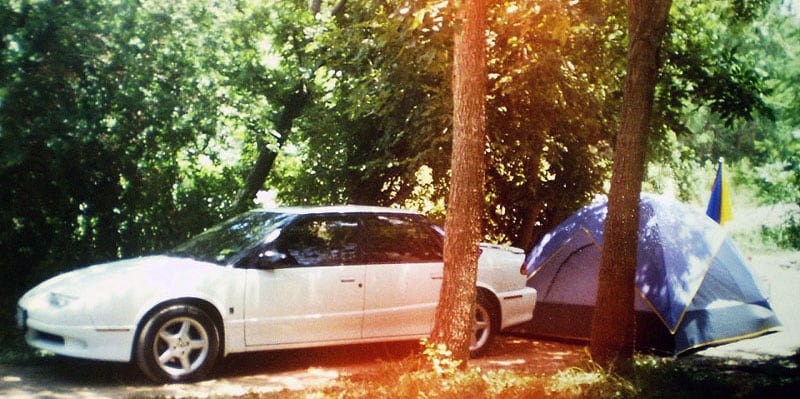
Above: Cindy’s first camping trip with the Saturn and the tent
All that changed, somewhat, when I lost my job of fourteen plus years and had to find new work in my late thirties. With all of my experience, all I could find was shift work at a variety of manufacturing plants. Corrugated packaging, tomato-based foods, and hospital equipment; the one thing they all had in common was insane hours. My forty hour work week became sixty to sixty-five hours. What little time off I had, was unpredictable.
But, the pay was relatively good, so we reluctantly accepted the fact that we’d only see each other once a week (unless you count that minute or two when Cindy would open her eyes briefly, to kiss me good night when I crawled into bed at 4:00 am). Oh, and there were those twenty minutes we’d steal in the parking lot at around 11:00 pm. Cindy would sacrifice sleep to see me during lunch breaks.
With no more free weekends, we sold the trailer at a loss and fell into a rut of work, sleep, and yard maintenance. Unless there was a holiday, we didn’t see friends or family much and, when we did, I was usually in a sleep-deprived haze. It wasn’t that I disliked working, but I took it a little personally that my marriage, and personal liberty, was being kicked aside for something as trivial as moving boxes, or salsa!
A few months later, a funny thing happened. Cindy was laid off from her job. That was the first of two lay-offs for her. That was a real wake-up call for us.
We suddenly felt what many families feel around the world; insecurity. I began re-thinking our life plan, and here’s what we realized. We had been sold a lifestyle that’s no longer a reality for most people. Previous generations of Americans enjoyed things like forty years at the same job, enough wages to support a family, pensions, and the ability to work your way up the ladder with experience, not just a degree.
Today, experience doesn’t count, healthcare and education are unaffordable, Social Security isn’t a sure thing, and your retirement, if you’re able to contribute to one, is a 401K.
I spent many a night imagining our probable future; long hours of work, no company pension for years of labor, and just a house full of stuff in a declining neighborhood. This is not how I wanted to remember my life when I grew old. Even though we’d done everything right, we weren’t secure or happy.
With no guarantee of a pot of bronze, and much less gold at the end of the rainbow, something was going to change.
With all the benefits that make settling down worthwhile gone, there was nothing holding us back from considering more radical options for how we’d live our lives.
“I’ll eat beans and rice into my sixties if it means I can do what I want with my life!”
I can’t remember the exact day I proposed the idea but, at some point, I said to Cindy, “Babe, I’ve got a crazy idea. What if we lived in an RV?”.
I couldn’t tell from her expression if she was thrilled or horrified, but I could see the wheels were turning. I began selling her the idea, “It’s a cheaper way to live. We could travel wherever we want. We wouldn’t have to work so much. We’d have access to more job markets if we wanted to work. With a generator and solar panels, utility outages wouldn’t be a problem. We could avoid bad weather instead of suffering through it. We’d have different scenery and neighbors whenever we chose.”
I went on and on, and her eyes began to light up. “Sure, why the hell not!” she said.
We couldn’t think of any good reason not to do it. We were willing to sacrifice money, everyday luxuries, square footage, going out all the time, and buying things we didn’t need on a whim if it meant we could have our lives back. I think my exact words were, “I’ll eat beans and rice into my sixties if it means I can do what I want with my life!”
That brought up the next question, “How the hell are we going to afford to quit work at our age?” You know what, when you want something bad enough, you find a way to make it happen.
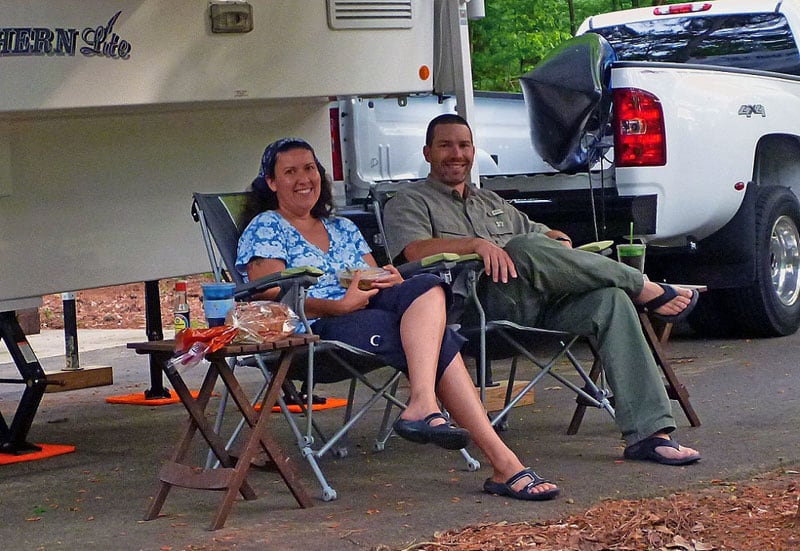
Our first goal was financial freedom because, as long as you owe somebody, they own you. Most people focus on making more money and working even harder to solve this problem, without giving anything up. We focused on spending less, and living way beneath our means.
A lot of soup and sandwiches were involved, and very little of anything else. Every cent we made went toward paying off a debt; house, car, credit card, whatever leaks were in our budgetary bucket. I realized a really quick way to accumulate money was to live “third world” on an American paycheck, and it worked. Grandma would be proud.
We figured, if some people are willing to go $80,000 in debt and work two jobs in order to get a PhD, we could sacrifice for a few years for the freedom to live life on our terms. We would start living for the next twenty years of our life, instead of just tomorrow, or the weekend.
As our debt disappeared, and we saw money piling up, our excitement kept us motivated. We saved enough to pay cash for our rig. Not only did this leave us debt free on the road, but the look on the salesperson’s face as we wrote the check in flip-flops and tattered shorts was priceless.
While we were paying off debt, and stowing away savings, we threw ourselves into researching everything from budgeting, types of RVs, the costs of full-timing, working on the road, and beyond. We were surprised at all the books and websites out there on the subject of full-time RV living.
A lot of the information, although somewhat helpful, was out of date or not relevant to our situation. My favorite quote from that research was, “How much does it cost to full-time? Whatever you’ve got”. This is true, but not a helpful guideline.
While researching our RV choice, we knew we would have limited funds once we hit the road. Whatever we bought had to be well-built. I’m talking twenty-five-year-lifespan well built.
Our first choice was an Airstream travel trailer. We even used a vacation to visit their plant in Ohio. They come solid, but not cheap. The Classic thirty-one foot we were looking at was $90,000.
After months of dreaming of Airstreams, we decided maybe a fifth-wheel would be better; plenty of room, easier to tow and maneuver, and Excel makes a good one for $45,000 less than the Classic. Down came the Airstream photos, and up on the wall went photos of the Excel, next to the hand-drawn thermometer tracking our money goal. We couldn’t wait!
Then Cindy called me one day at work and said, “Babe, what about a truck camper?” It seems she’d been researching the idea on company time. “Could we full-time in a truck camper?”
We were comfortable in the eighteen foot trailer years ago. Why not? But could we find one comfortable enough, and made well enough? Hell, it’s difficult to even find a dealer south of Oregon with a decent selection. Luckily, we found two places in Texas that did. After stumbling on articles about full-timing in truck campers on Truck Camper Magazine, away we went.
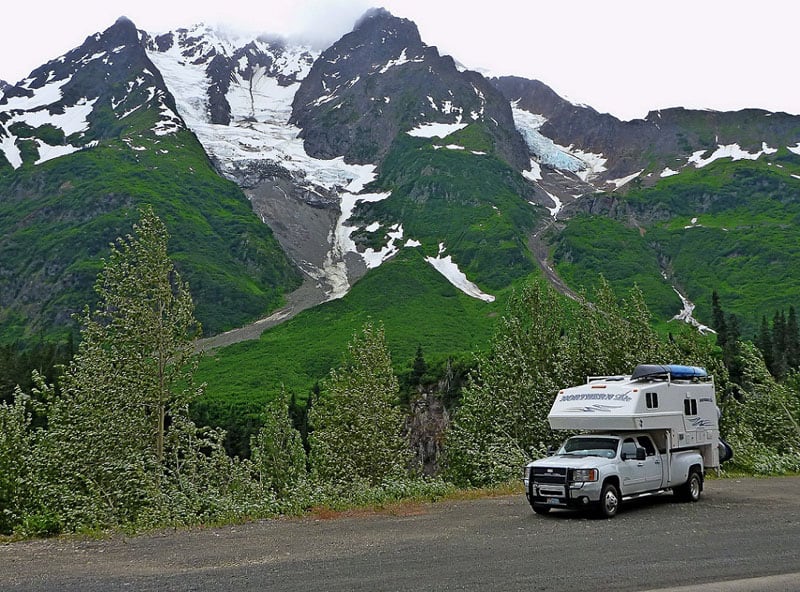
Above: Cindy and Dave’s Northern Lite on Highway 37A in British Columbia
We chose Northern Lite because they are a small company in Canada that produces a small amount of campers per year versus mass producing them at high speeds. We also liked the floor plan, the materials used, storage space, and it was comfortable.
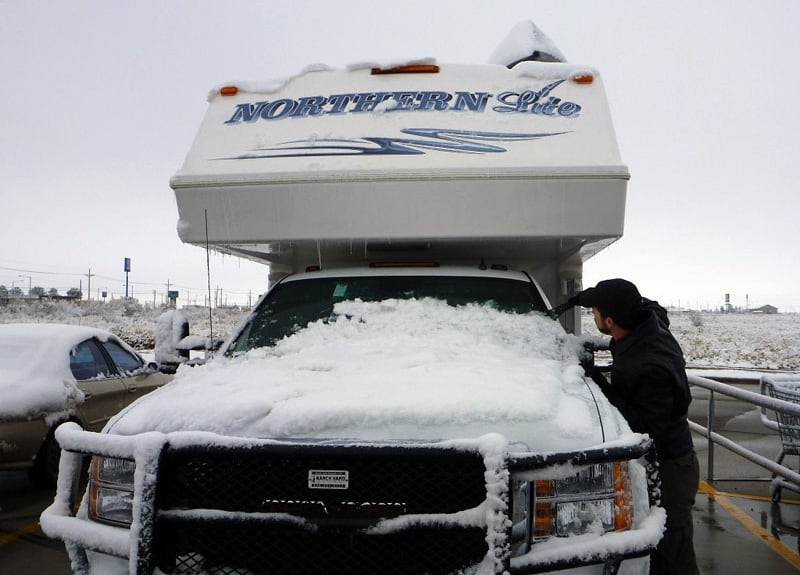
Above: Pecos, Texas snowstorm
We chose a fiberglass camper because of the lower weight (3,400 pounds dry), strength, fewer seams (less potential leaks), and insulation.
Now for the truck. Let me start off by saying I’ve never been a fan of any particular brand. I’m a facts man. I’m looking for a vehicle that will do the job, for a long time, with a minimum of headaches down the road. With a truck camper in mind, I wanted a heavy-duty dually truck, with a diesel engine for longevity and power. In my opinion, it’s better to buy a truck made for the job, than skimp, and then spend time and money adding aftermarket parts to help it do the job.
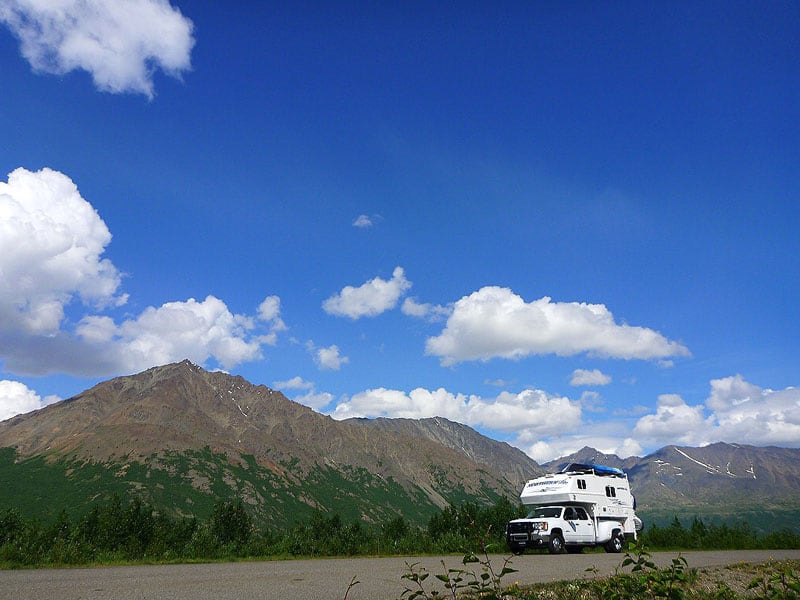
In 2011, we chose the GMC HD 3500. We bought it new because we got the latest improvements, a new truck warranty, and new truck reliability. When you purchase a new truck, you know the truck’s history and avoid repairs for many years.
We paid very close attention to payload numbers and the weight of our camper. We included the wet weight, options, and our stuff in our calculations. Our truck also has an extended cab that provides a lot of extra storage. We use that a lot.
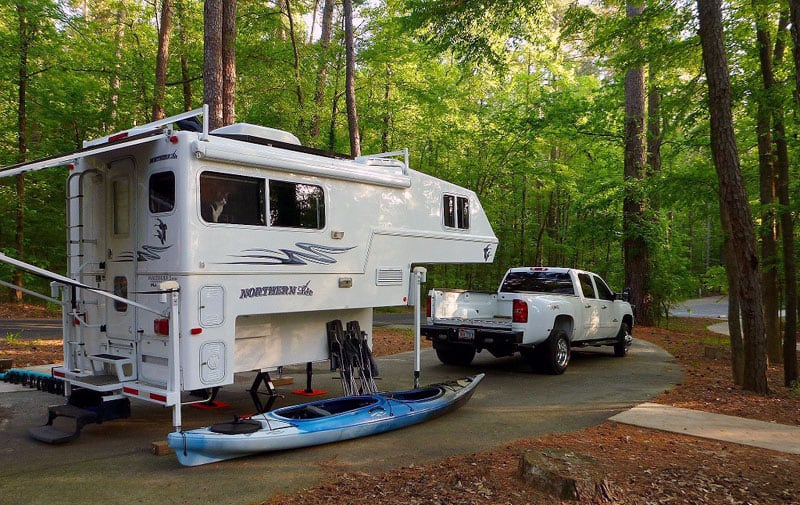
Above: Caddo Lake, a host site
What we didn’t realize until later in our travels was the freedom that comes with a truck camper. Many an RVer has had to pass up a gas station, park, campground, or parking lot because their rig was too large.
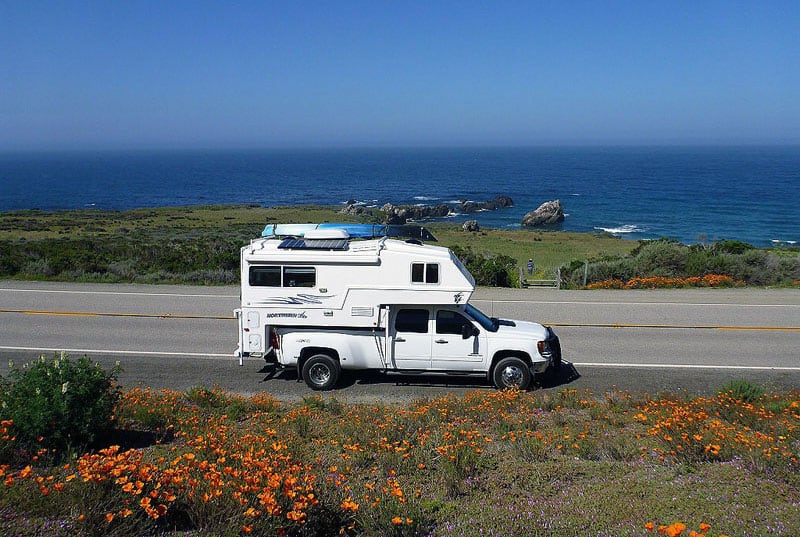
Above: Pacific Coast Highway, California
Freedom of choice is much more important to us than a living room or a larger kitchen. The simple ability to make a turn into a parking lot, without having to plan an exit strategy, is priceless. Not to mention U-turns, backing up, changing lanes in traffic, or last minute exits. Since we’ve gone full-time, we’ve uttered the words, “Man, I’m glad we have a truck camper!” many, many times.
Once we finally settled on the rig, the fun part began. We started selling everything. Craigslist became our most visited website as we posted ads for every stick of furniture, extra clothing, and accumulated junk. The whole shebang.
When we did this, we learned two things. One, we had a lot more junk than we realized. And two, people react differently to lightening the load. I found it completely liberating, like slowly cutting through the ball and chain on my ankle. Cindy, on the other hand, would occasionally come across an item that made her feel as though she was losing a limb. A pair of stuffed animals from her childhood comes to mind. I had to keep reminding her that those things were holding her prisoner. If she was to be free, she had to let go.
We saved the important and irreplaceable items, like photographs, but the rest we donated, gave to friends and family, or sold. Long story short, we made about $6,000 just from selling all that stuff. Next to go were the motorcycles. There was another $10,000 in the bank. When all was said and done, the funds from selling our stuff became our starting fund.
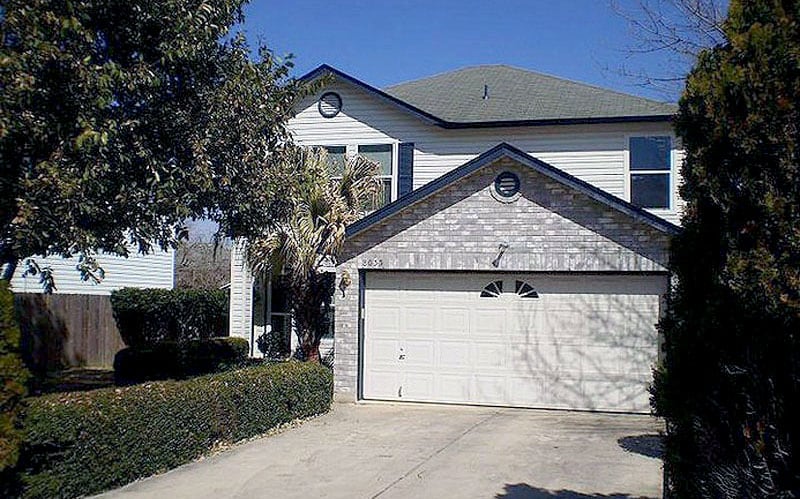
Above: The house Dave and Cindy sold
We sold the house for about what we paid for it ten years earlier, and moved into a cheap apartment. We sold our newer, gas guzzling cars, and bought a pair of cheap used gas savers to use until we quit our jobs. Our 401K funds were used to purchase annuities from an insurance company that guarantees us $750 a month for twenty-five years.
It was about this time that our friends and family, who playfully called us crazy when hearing about our plans, realized we were serious. Asking them if they’re interested in coming over to rifle through your things tends to have that effect.
One thing we weren’t prepared for was their reactions. After all, you’re not supposed to be able to just drop out of the game like that. They asked, “How will you live?” and, “Where will you go?”
The final months before taking the plunge were an emotional roller coaster. There was incredible elation at finally reaching the top of the diving board, mixed with the sadness of leaving friends behind, and the fear of the unknown.
As constraining as a job and home can be, they do provide some sense of stability. Leaving them both feels a little like cutting the bow line, allowing your rowboat to drift freely on the ocean. It goes against everything most of us have been conditioned to do, and your mind works overtime, imagining everything that can and will go wrong, out there.
However, there’s nothing quite like telling the people who’ve had you working sixty hour weeks, that you’re quitting and retiring at age forty-three. I still get a twinkle in my eye when I think about that day.
For Cindy, it was a little easier. Five months before she’d planned to give notice of her retirement from the kitchen/bath wholesale industry, they laid her off yet again. It was one last sign that it was time to go for it.
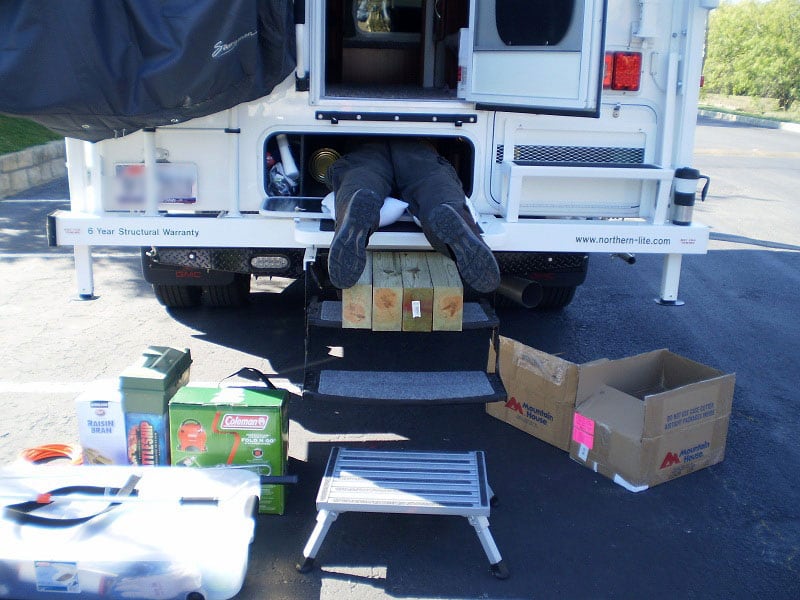
Above: Packing up their new home
The first month was awkward. We didn’t know how this worked, and it felt odd just being able to do whatever. There was no place to be, nobody to report to, no call to make, and no need to go back home. It was the same feeling you get when you lie to get a day off work. It feels too good to be true, and you can’t really relax because you’re waiting for the other shoe to drop.
Something was going to happen any minute to make us regret this.
We felt like prisoners who’d been released into society after a thirty year sentence. “Now what do we do?” The structure around which we used to live is completely gone, and our lives are now completely freeform.
“If a weekend trip is like seeing a movie trailer, full-timing is getting to see the whole movie.”
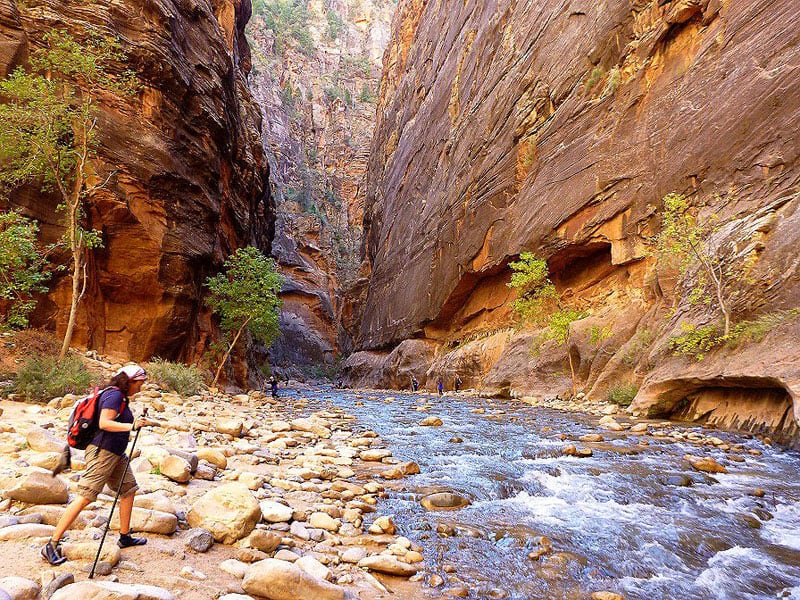
Above: Hiking The Narrows, Zion National Park, Utah
The good news is that the jump off the diving board didn’t drown us. It turns out the world out here is a pretty cool place to live in, not just to visit on the weekends. There was amazing beauty out there for us to see, clubs and fellow RVers eager to help us into the lifestyle, and hidden talents within us waiting for some free time to reveal themselves.
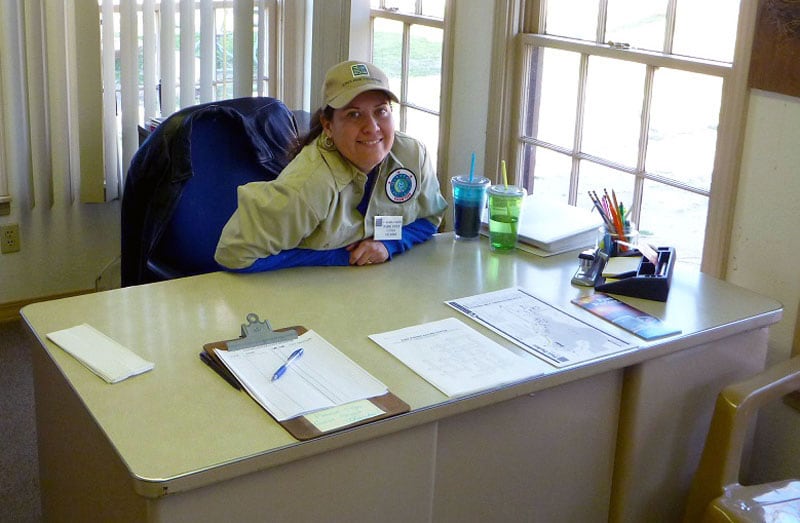
Above: Working at the Nature Center at Fort Parker State Park
There are businesses that hire campers seasonally, which helps us put a little extra money in the bank when we need to. There are parks that let us stay for free, in exchange for a little light work on our part. This also leaves a little extra money in the bank, again making money by simply not spending it. We also enjoy a greater variety of work, on our schedule, with no stress, and no commute. The old adage is true, “Do what you love, and you’ll never work a day in your life.”
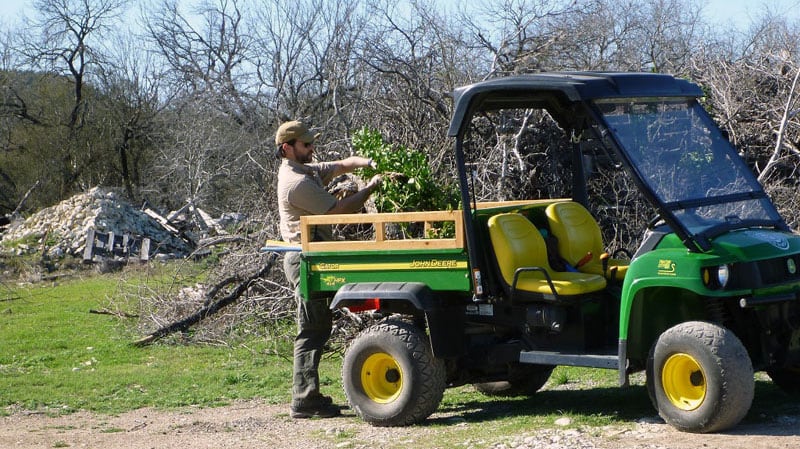
Above: Clearing limbs At Garner State Park
We made a realistic budget that includes gas, site fees, electric, insurance, groceries, entertainment, life insurance, propane, etc. We currently live on about $800 a month.
We have found lots of places to cut costs. For example, satellite television is $40 to $150 a month, versus DVDs by mail are $10 to $50 a month. Cellular internet service from the local telephone company is $50 to $80, versus internet at the local library or fast food joint for free. Our budget, cost saving tips, the common costs for sites and utilities, and FAQ can be found on our trip journal, at www.mytripjournal.com/albinorhino.
We’ve seen motorcycles towing little pop-up trailers and $300,000 buses towing full-size pick-ups with two Harleys in the bed, on a custom installed hydraulic lift. Again, money gives you options, but you don’t have to be rich to full-time if you’re willing to make sacrifices and be resourceful.
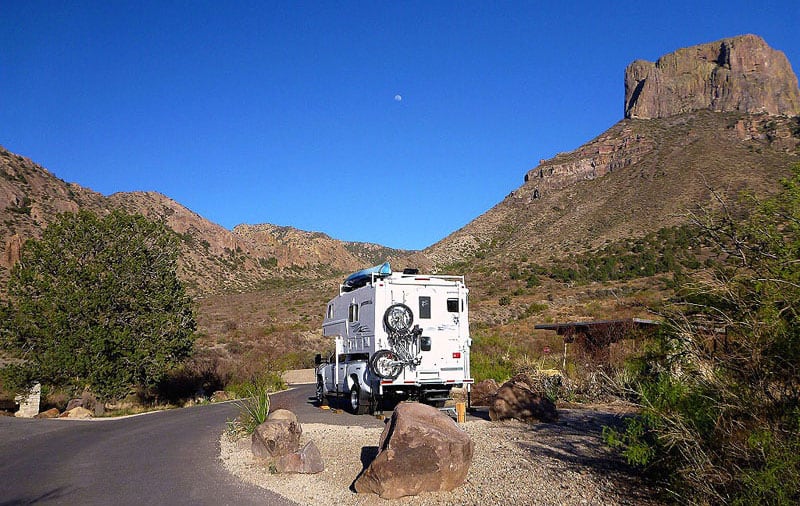
Above: Chisos Basin, Big Bend National Park, Texas
The rest is history, and a grand story in the making. There have been sacrifices, but they’ve been overshadowed by mountains, redwood trees, amazing scenery along America’s highways, and conversations with new friends. Our daily commute is a park road.
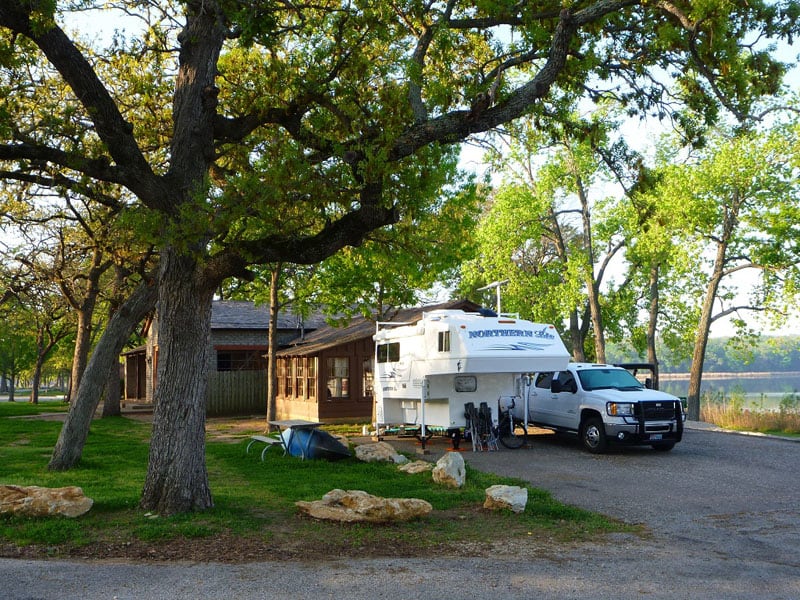
Above: Fort Parker State Park
Our job, when we choose to have one, is little more than what we used to do on weekends at home; light maintenance or yard work, and some housecleaning a couple of days a week.
We’ve had the occasional problem arise, but when you’ve got plenty of time on your hands to deal with them, problems are just bumps in the road.
“In the many years since taking the plunge we’ve lived more than most people do in a lifetime.”
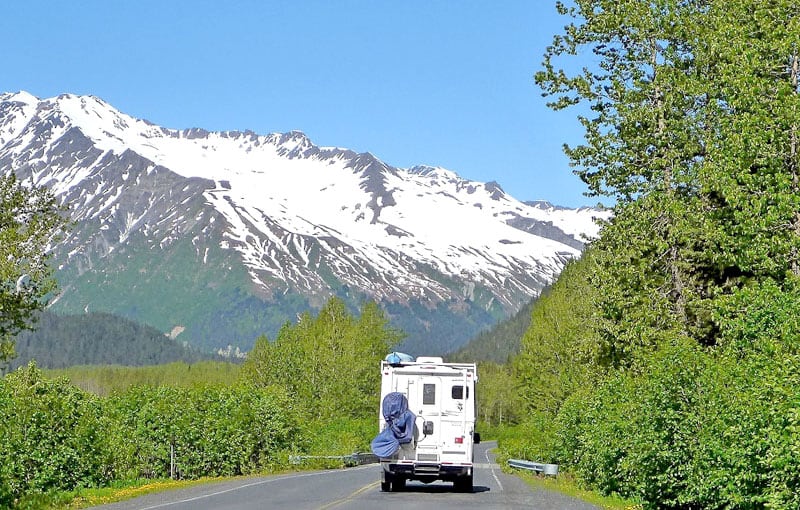
In the many years since taking the plunge we’ve lived more than most people do in a lifetime. We’ve taken thousands of photos, seen hundreds of sunsets, postcard landscapes, and wildlife in its natural habitat.
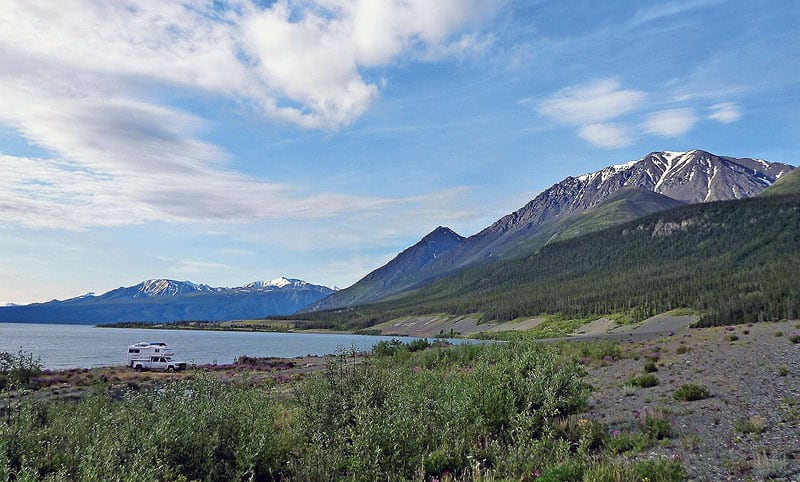
Above: Camping at Kluane Lake, Alaska
Instead of rushing through an area on a tight schedule, we can immerse ourselves in it, without watching the time. If a weekend trip is like seeing a movie trailer, full-timing is getting to see the whole movie.
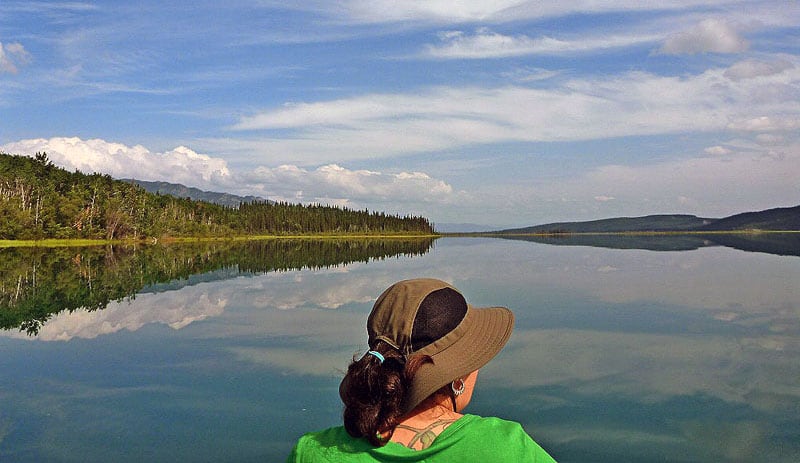
Above: Paddling the Yukon River
People often ask us about the price we pay to live this way and what we’ve had to give up. I always respond the same way, “Everyone pays a price to live how they live. Have you thought of what you’re giving up to live your lifestyle?”
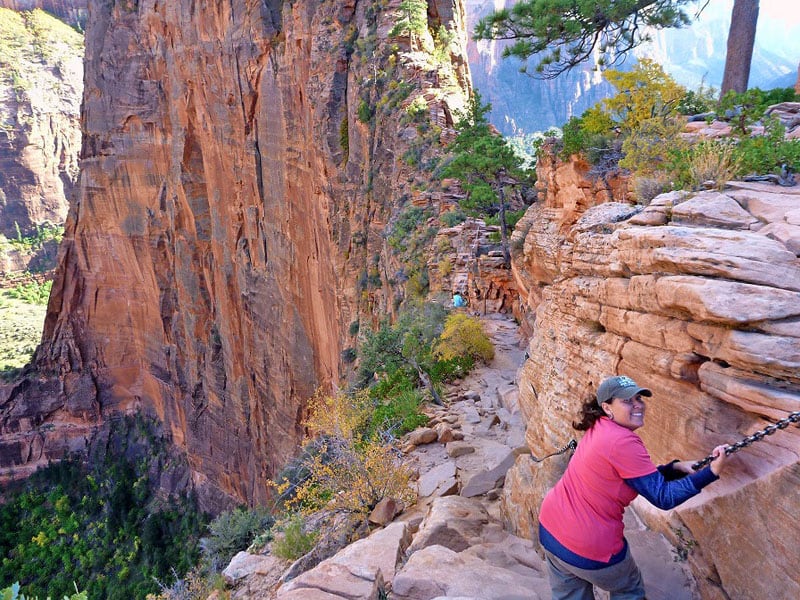
As far as we’re concerned, it makes more sense to live for today, than to live in preparation for the last fifteen years of your life. But, as I said before, there is no right choice, only the choice that’s right for you.
The most important thing to us is, we’re living for ourselves now instead of for our jobs. Many people are perfectly happy putting down roots, having kids and doing the 9 to 5, and we’re happy for them. We don’t know where we’ll be when we’re seventy years old, but we’ll have a tale to tell for sure.
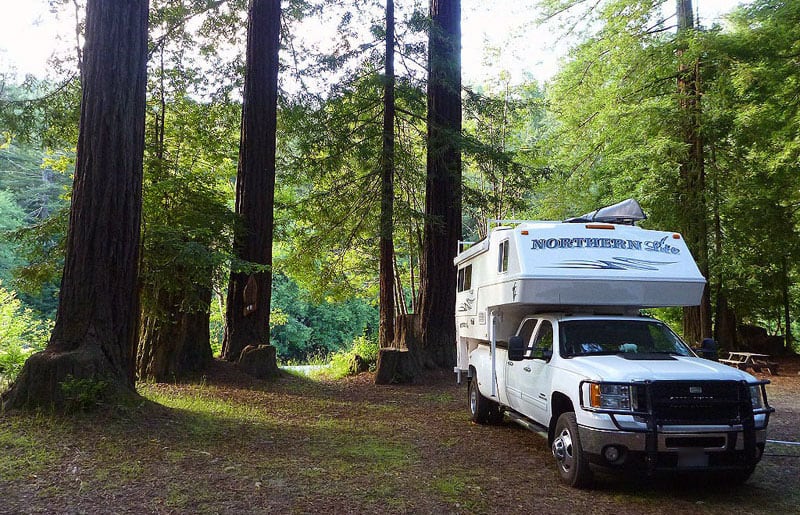
Above: Camping in Gualala, California
At forty-three, we’re an odd couple out here in RV land, and full-timing in a truck camper makes us quite a curiosity indeed. We’re frequently asked about full-timing at our age, and where we got the camper. We’re always happy to help others looking to find a little more freedom in their lives.
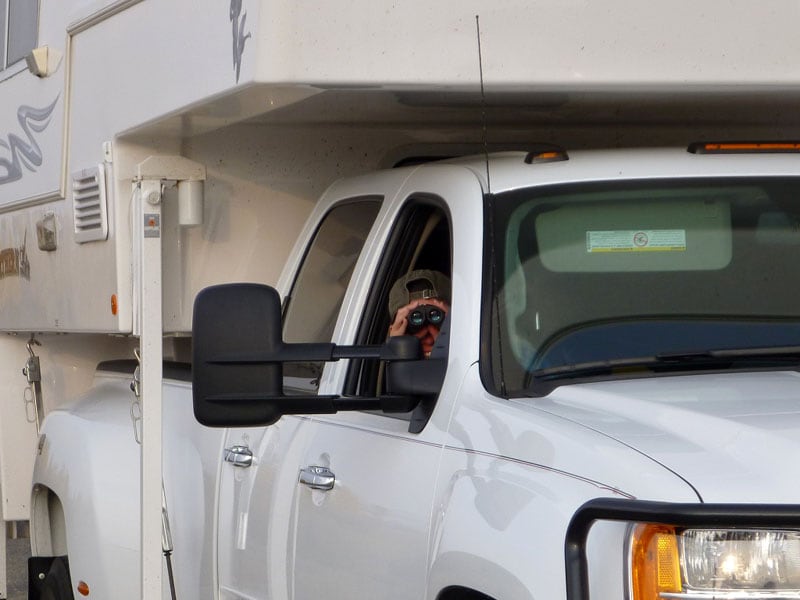
At the same time, we thank all those adventurous souls whose advice we learned from, and our grandparents who always advised us, “Do it while you’re young.” My favorite piece of advice is, “You’ve got to have a plan for your life because, if you don’t, you’ll fall into someone else’s plan. And you know what they’ve got planned for you? Not much.”
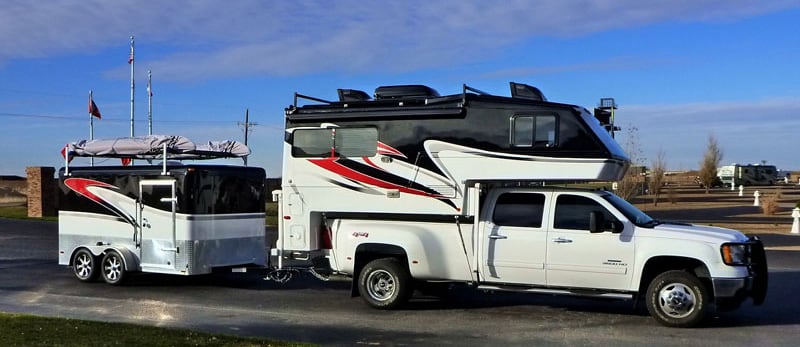
It’s 2020 and our original TCM article was posted in 2013. So, what has happened to those crazy kids who sold it all in 2011 for a life of freedom on the road? What happened after the proverbial shine wore off their camper and they had seen just about everything worth seeing on the open road? Well, here’s where we are now, and what we’ve been up to since leaving everything behind.
After traveling non-stop for over a year, we settled into a somewhat European style of living. We work about six to eight months, and take the rest of the year off to recharge and have fun.
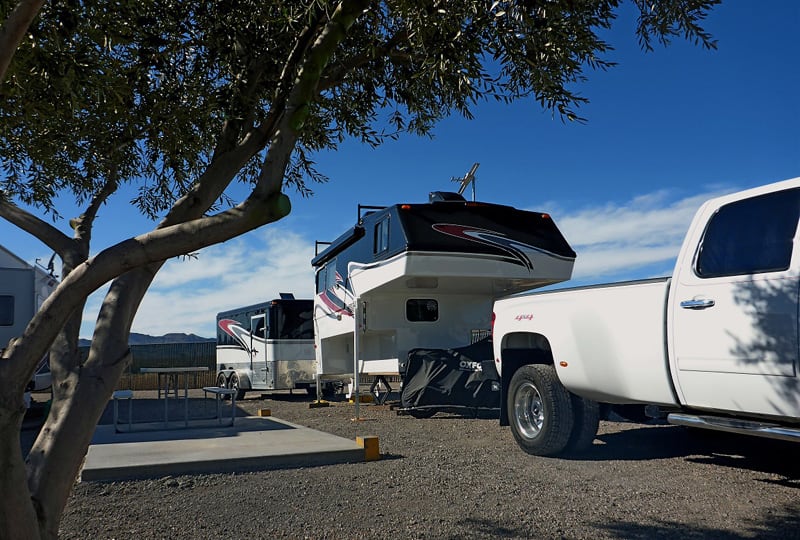
Since taking our first job back in 2013, we’ve made contacts, learned about new opportunities, and made a few changes to our routine. For the last six or seven years, we’ve enjoyed a variety of seasonal work, including warehouse jobs at places like Amazon and JCPenney’s during the holiday season. This is busy and somewhat physical work, but it’s simple.
The pay is usually around $15 an hour plus a stipend. The stipend covers most, if not all, of your campsite fees.
The jobs are great for those of us who have less of a need to socialize, though there are opportunities to be social if you wish. Some jobs can be physically demanding, which can also be viewed as, “getting paid to get/stay in shape”.
We’ve also worked for national parks. This work is slower paced, and focuses on retail sales and customer service. Overall, the work is pretty easy and can be fun.
Busier national parks like the Grand Canyon, Yellowstone, and Grand Tetons, can get busy during the summer. If you’re a people person, national park jobs are for you. We found that between the constant interaction with guests, and the employee “get-togethers” after hours at the campground, all the interaction can be a bit much.
Overall, we had good experiences at each park. You can work for one of the concessioners at the parks, or try one of the non-profit groups or associations.
Depending on the arrangement (including campground fees and hourly wage) a couple can bring in between $10,000 and $16,000 over a season. Another benefit is getting to live low-rent in a comfortable climate at a beautiful national park with time to fully explore the area.
We have found lots of places to cut costs. For example, satellite television is $40 to $150 a month, versus DVDs by mail are $10 to $50 a month (minus commercials).
Cellular internet service is $50 to $200 depending on data usage, versus free internet at the local RV park, library, park visitor center or fast food joint.
Our DVDs by mail, together with over-the-air TV and Redbox, have served us well, as have our GPS, road maps, cameras and laptop. None of these, except Netflix, cost us anything monthly by the way, and always work.
In 2011, we made a realistic budget that includes gas, site fees, electric, insurance, groceries, entertainment, life insurance, propane, etc. We currently live on about $800-$1,000 a month.
In the last nine years, we’ve had no need to change our budget. We still get by just fine without a smartphone or WIFI hotspot.
It’s been pretty easy to save up money working seasonally, so we do occasionally spend beyond the budget. We still have no debt, and keep an emergency fund at all times.
We were worried about money when we first hit the road, but have since painted the rig, added a trailer, and bought motorcycles.
Since 2011 we have sold the kayaks. Like the mountain bikes, the burden of carrying them around and storing them outweighed the benefits of owning them.
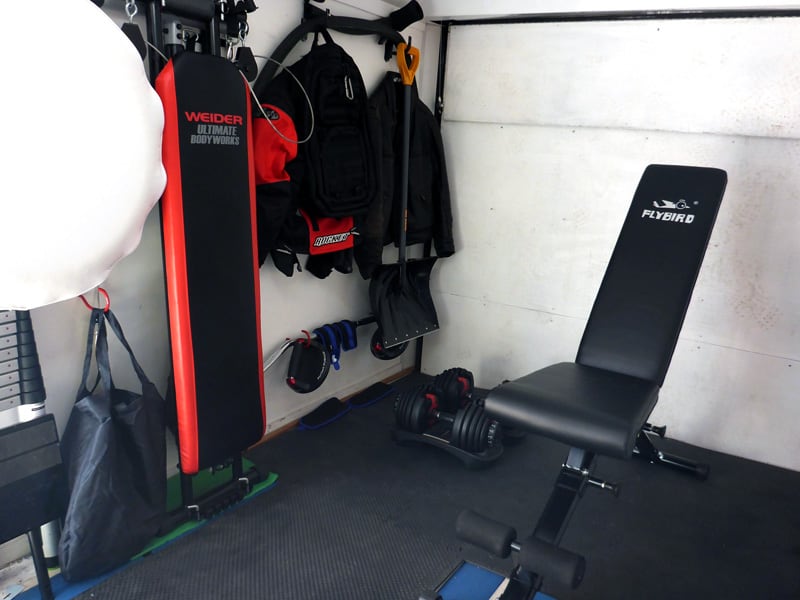
We turned the trailer into a gym with a set of adjustable Bowflex dumbbells, a multi-position weight bench, and a cheap Weider version of the Total Home Gym.
We feel the best health insurance is health assurance. It’s cheaper, and makes you feel great, too. We also pulled the remaining carpet out of our camper. Avoid it if possible.
Having been on the road for nine years, here are some random thoughts on the rig, and life on the road in general.
The most common question people ask about full-timing are about what it costs. On the flip side, I decided to estimate what we have saved. I use a simple formula, including items we haven’t paid for since leaving home; property taxes ($175/mo), water/trash pickup ($45/mo), WIFI/cable service, ($100/mo), etc.
So far we have saved about $35,000! This figure balloons to $49,000 for a non-homeowner renting at $700 a month! That assumes a monthly campsite fee averaging $350 month.
Even after a roof coating, motorcycle and trailer purchase, and a fantastic paint job, we’re in the black over $6,000. That does not include any money from seasonal work. And to think we stressed over money when we moved out of the house.
Our Northern Lite has performed well overall. Our GMC 3500 has also been stellar. I think we have the perfect setup currently, but I do sometimes fantasize about the relative ease of simply unhooking the truck from a small fifth wheel.
If I could do it all over again, I’d choose the same setup, except I would have added the full front bumper replacement on the truck right off the bat, instead of the grill guard. The grill guard folded up on us in a minor accident causing $5,000 in damage, and weeks in the shop.
I also wouldn’t have installed a kayak rack on the roof or purchased a generator. We have hardly used them. I wouldn’t have bought all-terrain tires. They are noisier on the road, difficult to balance, and wear unevenly when towing/hauling.
We love the adjustable airbags, Fantastic Vents, double-pane windows, and having no slides! We still believe the fewer holes in your RV, the better.
Finally, we noticed change after a couple of years on the road as tourists, sight-seers, and workampers. Our travels began to be slow down and be guided by climate, weather, job opportunities and a handful of favorite spots. We view this slowing down as neither a good or bad thing, but rather a settling in of sorts – into a new life.
When choosing this life of freedom, it’s important to remember that it’s not just about freedom to explore, it’s also about the freedom to sit, relax a bit, and do nothing without feeling guilty about not constantly working on some bucket list.
Sometimes I’m climbing a mountain or hiking in a national park. Other times we’re enjoying Judge Judy or watching a DVD while eating one of Cindy’s amazing creations. I enjoy either activity equally.
The greatest rewards of this lifestyle are time, options and freedom. Enjoy them!
Please share your story about why you got a truck camper.
